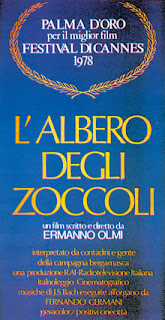Vittorio Valletta - industrialist
Agnelli lieutenant who turned Fiat into an auto giant
The industrialist Vittorio Valletta, whose diplomatic and deal-making skills helped him turn Fiat into the beacon of Italy’s postwar recovery, was born on this day in 1883 in Sampierdarena, a port suburb of Genoa famous for shipbuilding. He joined Fiat in 1921, quickly rising to the top and became effectively the right-hand man to founder and president Giovanni Agnelli, as CEO practically steering the company single-handed through the turmoil of the Second World War. After Agnelli’s death in 1945 he became president and remained in control of the company until 1966, when he finally handed over to Gianni Agnelli, the founder’s grandson, at the age of 83. Under his leadership, Fiat grew to such a position of dominance in postwar Italy that at one stage 80 per cent of cars bought in Italy were made by Fiat. The company’s factories employed almost 100,000 people, fulfilling Giovanni’s ambition, which he handed to Valletta almost on his deathbed, to "make Fiat greater, giving more working opportunities to the people, and producing cheaper and better cars". Valletta also pulled off one of the greatest business coups of the postwar years when he secured a contract with the government of Russia to produce 600,000 cars per year. Read more…
______________________________________
San Marino’s liberation from Fascism
The day the people demonstrated against their government
San Marino residents celebrate the anniversary of their liberation from Fascism on this day every year. The Sammarinese Fascist Party had been founded in 1922 by Giuliano Gozi, a veteran of the First World War who came from a rich and powerful family. The party was modelled on the Fascist party of Italy and used violence and intimidation against its opponents. Gozi took the roles of both foreign minister and interior minister, which gave him control over the military and the police. He continued to serve as foreign minister, leading the cabinet, until 1943. In 1923 Gozi was elected as San Marino’s Captain Regent. The Fascists retained this post for 20 years as they banned all other political parties, although some independent politicians continued to serve in the Grand and General Council of the Republic. But in the early 1940s a group of Socialists started up a clandestine anti-fascist movement and the opposition to the Fascist regime grew stronger in the republic. On July 28, 1943 the Socialists held a successful political demonstration against Fascism and as a result new elections were called. Read more…
_____________________________________
Luigi Musso - racing driver
Wealthy Roman who found expectations hard to bear
Luigi Musso, who for a period of his life was Italy’s top racing driver, was born on this day in 1924 in Rome. Musso competed six times for the world drivers’ championship, three times for Maserati and three times for Ferrari. He finished third in the 1957 season, driving for Ferrari. His solitary Formula One Grand Prix victory came in 1956 in Argentina, although he had to content himself with a half-share of the points after being forced to hand over his car to Juan Fangio, the local hero and Ferrari team leader, after 29 of the 98 laps, when Fangio’s car failed. Sadly, two years later he was killed in an accident at the French Grand Prix in Reims, which his girlfriend, Fiamma Breschi, blamed on the ferocity of his rivalry with his fellow Ferrari drivers Mike Hawthorn and Peter Collins. Born into a wealthy Roman family – his father was a diplomat – Musso grew up in a luxurious palazzo off the Via Veneto. He acquired his love of cars from his brothers, who were also racing drivers. He began to compete in 1950 in a car he bought himself, a 750cc Giannini sports car. He made an inauspicious start, his first race ending when he left the track and collided with a statue of the national hero, Giuseppe Garibaldi. Read more…
_____________________________________
Riccardo Muti - conductor
Celebrated maestro shows no sign of slowing down
The brilliant conductor and musical director Riccardo Muti was born on this day in 1941 in Naples. Since 2010, Muti has been conductor of the Chicago Symphony Orchestra while retaining his directorship of the Luigi Cherubini Youth Orchestra, a training ensemble for talent from Italian and other European music schools, based in Ravenna and Piacenza, which he founded in 2005. Previously, Muti held posts at the Maggio Musicale in Florence, the Philharmonia Orchestra in London, the Philadelphia Orchestra, the Teatro alla Scala in Milan and the Salzburg Whitsun Festival. He was named principal conductor and music director for the Maggio Musicale when he was only 28 and stayed there 12 years. He was at La Scala for 19 years from 1986 to 2005, his tenure ending amid rancour following a conflict with the theatre's general manager, Carlo Fontana. Muti spent his childhood years largely in the Puglian port city of Molfetta, near Bari. He entered the world in Naples, he says, at the insistence of his mother, Gilda, herself a Neapolitan, who travelled across the peninsula by train in the later stages of each of her five pregnancies in order that her children would also grow up as Neapolitans. Read more…
Booking.com

.jpg)


.jpg)

.jpg)


.jpg)
.jpg)



.jpg)
.jpg)

.jpg)


.jpg)
.jpg)


.jpg)

